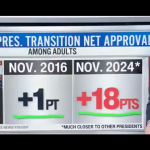John Tlumacki/The Boston Globe via Getty Images
- College students were forced to pack up their things and learn online when COVID-19 hit.
- Several universities have relied on vaccine mandates and routine testing to reopen in person.
- Northeastern University started its own lab to safely resume in-person learning.
Since the pandemic began, universities across the US have grappled with ways to safely reopen for an in-person experience and several have leaned towards robust testing systems as means to do so.
This year, Northeastern University in Boston required students, staff, and faculty to get COVID-19 vaccines and get tested once a week. Jared AuClair, Technical Supervisor for the Life Science Testing Center told Insider they processed up to 35,000 tests a day but that testing was critical in resuming in-person classes.
Soon after the university closed for in-person learning in March of 2020, leadership set out to find a way to safely reopen.
AuClair told Insider that while the university doesn’t have its own medical center, leadership found that opening their own testing facility was the most efficient way to get accurate and fast results.
Northeastern opened its own lab to test for COVID-19
Within six weeks after making the decision in mid-June, the university received its accreditation, picked a location for the center, brought in staff, and chose a management system to get a lab up and running by August 2020, the start of the new academic year.
“Last year when we did this testing was really the primary way we managed the pandemic,” Senior Vice President of External Affairs Michael Armini, who co-chaired the COVID-19 task force, told Insider.
Since the start of this fall semester the lab conducts 4,000 to 5,000 tests a day and is able to sequence and track variants. They’re also now testing for the flu.
The University of Southern California also tests students and staff regularly after reopening this summer.
Dr. Sarah Van Orman, chief health officer at USC Student Health and a member of the American College Health Association, told Insider that despite being a nearly full-vaccinated campus, breakthrough infections meant there had to be a mandatory testing system in place.
Van Orman said the university tests between 30,000 to 35,000 people each week. On the week of October 10, there was only a 0.1% positivity rate among students.
At Northeastern, students are required to test once a week. AuClair told Insider the university has two testing centers: One for symptomatic testing, and one for asymptomatic testing. Students must schedule an appointment, which are completely free.
AuClair said the lab is operational 24/7. Samples are collected at one of the two testing sites. Each sample has a barcode corresponding to the individual it was collected from. Those samples are then sent to the lab where scientists add “viral transport media to each of the swabs, which inactivates any virus that’s there.”
In an effort to speed up the process, the lab has started combining five swabs to run one test, AuClair said. After the test is run, scientists will also look to sequence any potential variants. Results are then inputted back into the system and digitally sent back to the patients.
AuClair said this process helps paint a clearer image of what’s happening on campus, for example, if there’s a new variant or a cluster outbreak.
“All the positive tests are contacted through the university’s contact tracing team. We’re testing our own population so we know who lives in what dorm, for example, or if you live off-campus or what classes you go to. So, we can look at the data with that lens on and we can understand if there’s sort of a cluster forming around a specific event or class or something of that nature,” he said.
Testing helps university leadership make decisions
At USC, testing is connected through the university’s electronic health record, [RECORDS?] Van Orman said. Similar to Northeastern, students must make an appointment through the health record, and a QR code is generated that they scan when they show up for their test.
That code is then attached to a nasal swab collected on-site or a take-home saliva test that’s dropped off. Results are usually ready the next day via the electronic health record.
Van Orman said the system is attached to the university’s pandemic management system, so when someone tests positive, it automatically flags that they should be in isolation and alerts officials on who the person may have been in contact with. A contact tracer is then able to reach out to the others potentially exposed.
On top of testing, USC students have a daily “Trojan check” where they have to attest to feeling well and keeping on top of required testing in order to get a daily pass to campus. Without it, they won’t be allowed on campus.
At Northeastern, Armini told Insider that compared to last year, testing isn’t so much about tracking positive cases anymore. Their goal is to track trends and hospitalizations and make sure the campus is healthy.
“In other words, with a fully vaccinated population, positive tests are not the most important metric. And the reason is that if you’re vaccinated and you test positive, it’s very possible that you’re completely asymptomatic or you’ll have very mild symptoms,” he said. “What we’re really looking for now is hospitalization and severe illness. And right now we have zero hospitalizations, which is in a way the most important thing to look at today.”
Students prefer learning in-person
Students at Northeastern told Insider they’re happy to be able to have a somewhat normal in-person experience. Several students said they greatly benefit from learning in class and being able to see others in person.
Sophomore Darren Hsing transferred to Northeastern from Santa Clara University in California. He told Insider that while he always knew he wanted to attend the Boston-based school, its commitment to safety greatly factored in his decision to transfer.
“I saw different news reports early on in the pandemic of how strict they were. So, I felt confident that I would be all right coming to school here,” Hsing said.
Grad student Shourya Kheterpal started at Northeastern during the last academic year. Kheterpal, an international student from India said the previous year was chaotic and despite testing, much of the learning was online and people were confined to their rooms. He said there was a feeling of fear that people would catch COVID-19 and a strict on-campus experience made him feel like he was missing out on a normal college experience. He returned to India in the spring and went to school online.
“Last year there was nothing. I was just caged in my room. The only thing I knew about my college was this one building called AIESEC. That was the only thing. As an international student who just came to a new country, new people, it just took a toll on me mentally,” Kheterpal told Insider.
After returning to the Boston area this fall, Kheterpal said the experience is much different and he’s looking forward to resuming an in-person experience, including joining clubs.
For Emily Niemer, also at Northeastern, getting vaccinated has also alleviated a lot of concerns. Niemer said while she stayed on campus last year, she was very concerned that testing positive would mean she would have to be isolated for at least ten days as part of the university’s protocol.
Now, Niemer said she’s less concerned about testing weekly not that she’s vaccinated and lives off-campus. She said even if she tests positive she could now isolate herself in the safety of her own apartment.
Edward Man, now a sophomore at Northeastern, said he was disappointed because the pandemic took away both his senior year of high school and his freshman year of college.
However, he said the strict policies last year and the mandatory testing now means that the school doesn’t shut down often and there’s some normalcy.
“So with all of these rules I was like ‘it is what it is. I’m just going to have to follow this, so I can actually try and get an education at school.’ But you know it makes sense. Like, I’m honestly glad that Northeastern’s COVID-19 policies were as strict as it was. Cause I know other schools that literally had to be evacuated within three days but we were still operating,” Man said.
Both Niemer and Man said they both learn better in a classroom setting. While their grades have improved, they said they hope professors remain as flexible as they were during the pandemic.
Niemer recalled getting sick often while on campus before the pandemic with what she said were normal illnesses that spread in college settings. She’s glad the pandemic built in some leeway SO IF a student isn’t feeling well, they can stay home and get their work done online.
“I think that wearing masks, not even just for COVID-19, but for general hygiene and to avoid different sicknesses has been honestly really beneficial,” Niemer said.
Man said it’s taking him a while to learn how to study again and pay attention in class, but he prefers it over sitting in his dorm staring and getting distracted on Zoom.
Juan Rodriguez-Calvet, a senior at Northeastern, told Insider he sees the campus now getting back to normal.
“I see people walking around. It feels great. Now that everybody’s vaccinated,” he said.
Armini said the university initially required indoor mask use as people returned to campus, but as they evaluate testing data they may soon drop that requirement for the vaccinated.
Universities adapt policies based on the data
Van Orman at USC also told Insider data reviewed has led the university to drop its rigorous outdoor mask mandate. She said universities could be a model for other institutions, adding that successful and safe reopenings are contingent on policies that are “aligned with best public health practice.”
Van Orman said the new normal is now one where COVID-19 is part of the picture and decisions have to look at the best practices at any given time. While mask mandates may be dropped, they may have to be reimplemented if cases rise, for example.
“I think it’s very manageable and I think we are at a point where we can manage it at our colleges and universities. In many ways we have better tools to manage it at our colleges and universities than we do in many sectors and many other institutions,” she said. “It will be here to stay but I think normal is coming in the next six to 12 months.”
Have a news tip? Email this reporter: salarshani@insider.com
Powered by WPeMatico






